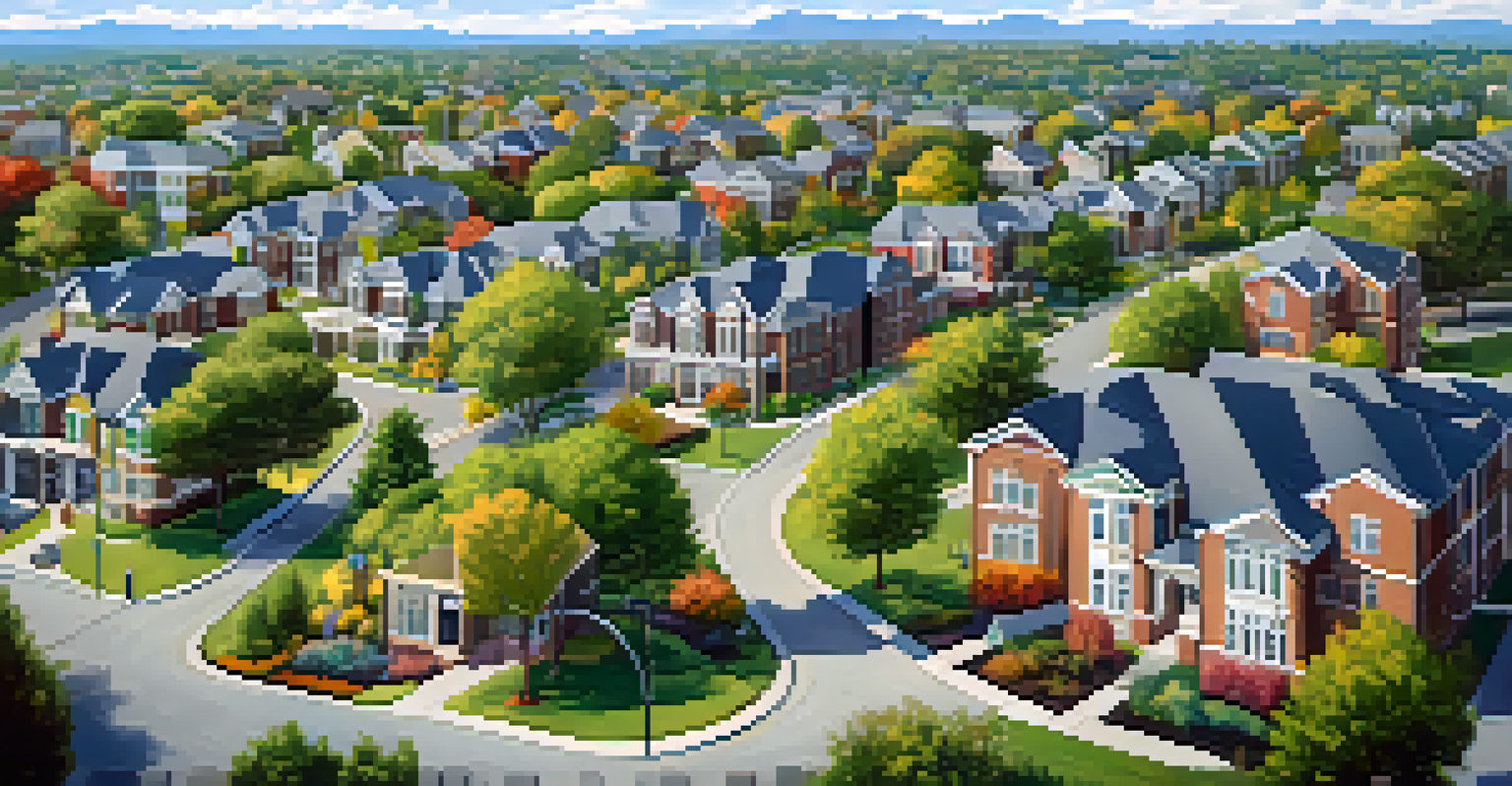How Proximity to Educational Institutions Affects Property Prices

The Importance of Location in Real Estate Valuation
When it comes to real estate, the age-old mantra 'location, location, location' holds true. Buyers often prioritize proximity to amenities, and educational institutions are at the top of the list. This focus on location is not just for convenience; it's a critical factor that can significantly affect property prices.
Location is the key factor in real estate; it’s the only thing that matters.
A home situated near a reputable school or university tends to attract not only families but also young professionals and investors. This demand can create a competitive market, leading to increased property values. In essence, the closer you are to quality education, the more appealing your property becomes.
Moreover, areas known for their educational institutions often see a ripple effect, where nearby properties also gain value. It's akin to a rising tide lifting all boats, demonstrating how the presence of schools can elevate an entire neighborhood's desirability.
How School Ratings Influence Property Prices
The quality of education provided by nearby schools plays a crucial role in determining property prices. High-rated schools are often a beacon for families looking to purchase homes, leading to increased demand. This demand can push property prices higher, especially in neighborhoods known for their academic excellence.

Parents are willing to pay a premium for homes within a good school district because they want the best opportunities for their children. This willingness to invest can drive property values upward, even in a fluctuating market. Conversely, homes near lower-rated schools may struggle to attract buyers, leading to decreased property values.
Location Boosts Property Values
Proximity to quality educational institutions significantly increases property demand and market prices.
It's important to note that school ratings are often based on various factors, including standardized test scores and graduation rates. Hence, a neighborhood's reputation for educational quality can significantly impact real estate trends, making it a key consideration for potential buyers.
The Impact of Universities on Local Real Estate
Universities not only provide education but also contribute to local economies. Areas near colleges tend to see a boost in property values due to the influx of students, faculty, and staff. This population brings with it a demand for housing, which can lead to higher prices for nearby properties.
The best investment on Earth is earth.
Moreover, university towns often experience a vibrant culture, with cafes, shops, and entertainment catering to the student population. This lively atmosphere can make these areas appealing to young professionals and families alike, further driving demand and property prices up.
Additionally, the presence of a university can lead to long-term investments in infrastructure and community services, enhancing the overall appeal of the area. As neighborhoods evolve and improve, property values are likely to rise, making proximity to these institutions a strong selling point in real estate.
The Role of Public Transportation in Educational Proximity
Access to public transportation can enhance the desirability of properties near educational institutions. Families and students alike appreciate the convenience of getting to and from schools or universities without the hassle of a car. Areas with robust transit options often see an uptick in property values due to this added accessibility.
Furthermore, good public transportation links can attract a diverse range of residents, including young professionals who may not own a car. This demographic shift can lead to a more dynamic community, further driving demand for properties in the area, ultimately pushing prices higher.
School Ratings Matter
Higher-rated schools attract families willing to pay more for homes, driving up property values in those neighborhoods.
In essence, the synergy between educational institutions and public transport creates a win-win scenario for both buyers and sellers. Properties that offer easy access to schools and transit options become hot commodities in the real estate market.
Long-Term Trends in Property Values Near Schools
Looking at the long-term trends, properties located near educational institutions often experience more stable price appreciation. This stability is due to the consistent demand from families seeking quality education for their children. Unlike other market fluctuations, the need for education remains constant, providing a buffer for property values.
Additionally, neighborhoods with high-performing schools tend to attract a more affluent demographic, further increasing the likelihood of property value retention. This trend can create a cycle of investment in the community, leading to improved amenities and ultimately higher property prices.
Investors and homeowners alike recognize that properties near educational institutions can be a safer bet in the long run. The combination of demand, stability, and community development makes these areas particularly attractive in the real estate market.
The Influence of School Events on Local Real Estate
School events, such as sports games and community fairs, can significantly impact the perception of a neighborhood. These gatherings not only foster a sense of community but also draw in visitors, creating a lively atmosphere. As a result, properties in these areas can gain value due to their enhanced appeal.
Moreover, when schools host events, they often promote their facilities and programs, showcasing the quality of education available. This visibility can attract potential buyers who may not have previously considered the neighborhood, further driving property demand.
Community Events Enhance Appeal
School events foster community engagement and visibility, leading to increased interest and higher property prices in the area.
In this way, school events act as a catalyst for community engagement and economic activity. The positive exposure can lead to increased interest in the area, ultimately translating to higher property prices as more buyers seek to be part of the vibrant community.
Understanding the Market Dynamics of Educational Proximity
Understanding the dynamics of how proximity to educational institutions affects property prices is essential for buyers and investors alike. It’s not just about the physical distance; it’s about the reputation, accessibility, and the community that surrounds these schools. Real estate decisions should consider all these factors for a well-rounded perspective.
Additionally, potential buyers should research local school ratings, community programs, and future development plans in the area. This information can provide valuable insights into the long-term investment potential of a property. A well-informed decision can lead to a more favorable outcome when it comes to property value appreciation.

In summary, the interplay between property prices and educational institutions is complex yet crucial. With the right knowledge and understanding of these dynamics, buyers can make informed decisions that benefit both their living experience and financial investment.